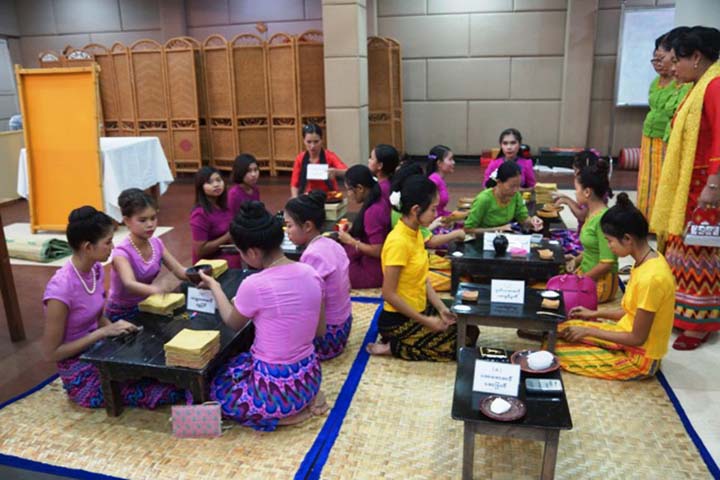Businesses producing gold foils are still thriving in Mandalay, where the traditional craft originated. There are several gold foil businesses at Myet Parr ward in Mahar Aungmye Township, Mandalay Region, and they are doing good business.
Mandalay City, the last royal capital of Myanmar, has several ancient temples, pagodas, and traditional crafts businesses, which form our intangible cultural heritage.
There are 200 gold foil-makers in Mandalay, and they are earning well. The art was developed under the rule of King Anawrahtar, and has been passed down through the Mon ethnic people, according to gold foil craftsmen.
Gold foils are used to gild pagodas and temples, and are widely sold at pagodas. It is customary for craftsmen to pay homage to their predecessors, with offerings of green banana and coconut baskets, before making gold foils.
There are eight processes involved in producing gold foils. First, gold is heated and moulded into sheets. The gold sheets are trimmed into six pieces of the desired size. Finally, bamboo paper is placed between the gold sheets. It takes about five hours to produce each packet of gold foil by beating gold sheets to make them thin.
The traditional craft can be observed in Mandalay City, located in northern Myanmar. — Than Zaw Min (IPRD)
(Translated by La Wonn)



